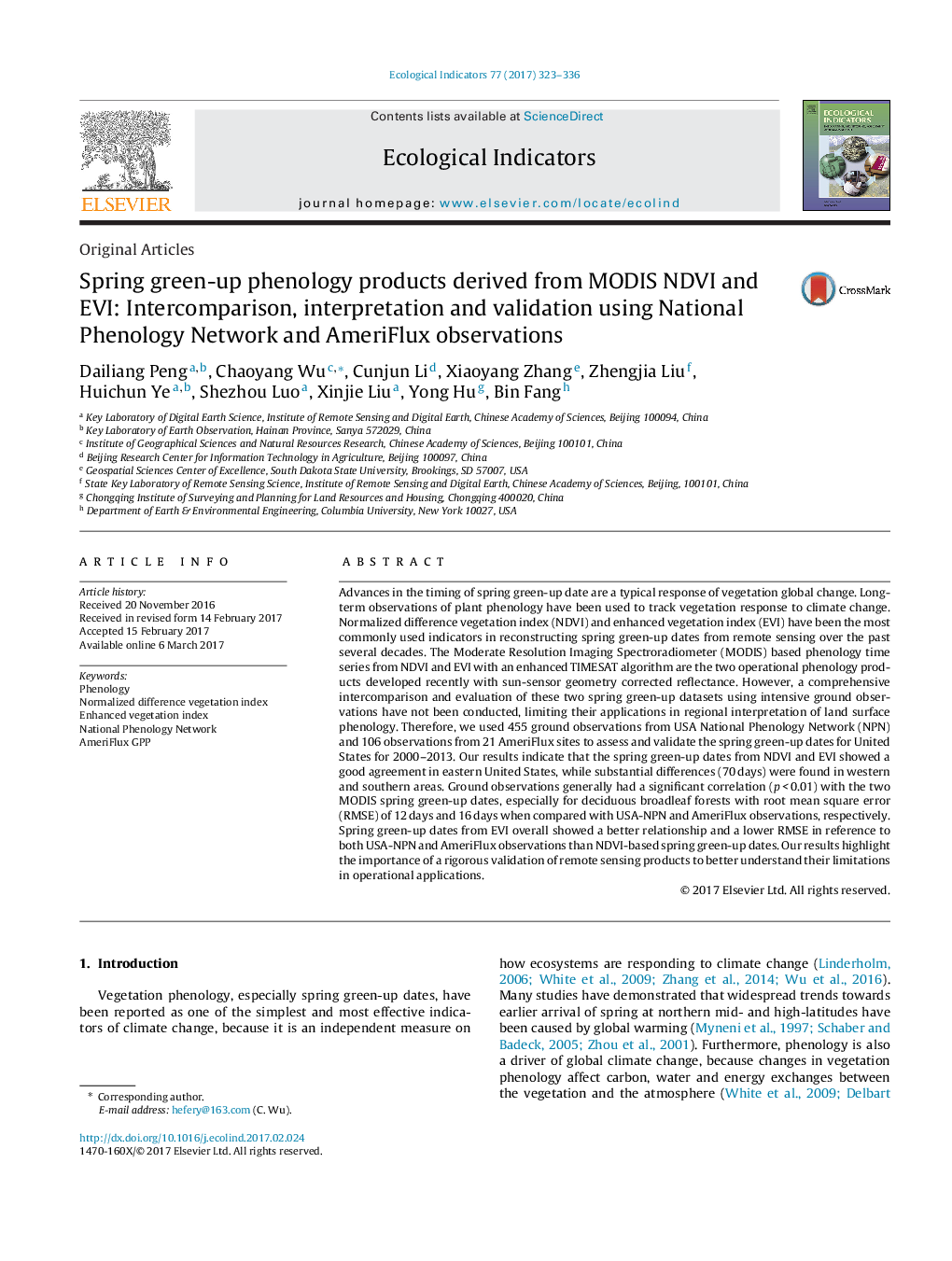| Article ID | Journal | Published Year | Pages | File Type |
|---|---|---|---|---|
| 5741736 | Ecological Indicators | 2017 | 14 Pages |
â¢Spring phenology validation using National Phenology Network and flux observations.â¢The green-up dates of deciduous broadleaf forest presents the highest accuracy.â¢Spring green-up dates from EVI overall showed a higher accuracy than from NDVI.â¢Large area of missing data limits the operational applications of MOD09PHN.
Advances in the timing of spring green-up date are a typical response of vegetation global change. Long-term observations of plant phenology have been used to track vegetation response to climate change. Normalized difference vegetation index (NDVI) and enhanced vegetation index (EVI) have been the most commonly used indicators in reconstructing spring green-up dates from remote sensing over the past several decades. The Moderate Resolution Imaging Spectroradiometer (MODIS) based phenology time series from NDVI and EVI with an enhanced TIMESAT algorithm are the two operational phenology products developed recently with sun-sensor geometry corrected reflectance. However, a comprehensive intercomparison and evaluation of these two spring green-up datasets using intensive ground observations have not been conducted, limiting their applications in regional interpretation of land surface phenology. Therefore, we used 455 ground observations from USA National Phenology Network (NPN) and 106 observations from 21 AmeriFlux sites to assess and validate the spring green-up dates for United States for 2000-2013. Our results indicate that the spring green-up dates from NDVI and EVI showed a good agreement in eastern United States, while substantial differences (70 days) were found in western and southern areas. Ground observations generally had a significant correlation (p < 0.01) with the two MODIS spring green-up dates, especially for deciduous broadleaf forests with root mean square error (RMSE) of 12 days and 16 days when compared with USA-NPN and AmeriFlux observations, respectively. Spring green-up dates from EVI overall showed a better relationship and a lower RMSE in reference to both USA-NPN and AmeriFlux observations than NDVI-based spring green-up dates. Our results highlight the importance of a rigorous validation of remote sensing products to better understand their limitations in operational applications.
